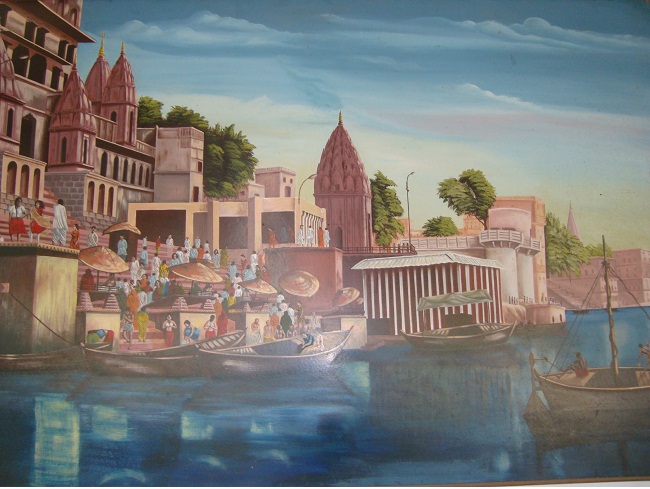Dying in Varanasi has a special benefit. Those who pass in the holy city of Varanasi, go straight to the heaven. For this reason religious people have been coming to the city when they see their end nearing since the ancient time.
But what if one cannot wait to die naturally? Committing suicide is a way; but suicide is condemned in the sacred scriptures. To address this dilemma, a temple situated deep inside the formidable maze of narrow streets of this ancient city, had a curious solution– Suicide assisted by priests.
The Kashi Karvat temple holds no particular significance today; but it was supposedly a short-cut to the heaven in the past.

Historian Jonathan Parry observes in his book titled Death in Banaras:
It is said that in a less corrupt age a karvat, or saw, was suspended from the roof of the shrine and would spontaneously fall on those on whom Shiva chose to bestow his blessing.
However, Christopher Justice describes in Dying the Good Death: The Pilgrimage to Die in India’s Holy City:
The temple is focused around a hole in the floor which opens into a large cavernous room below. On the floor of this room, about 30 feet down and directly below the opening, is a Shiva linga—the phallic, stone emblem of Shiva and main focus of his worship—which the pujari says sprang out of the ground on its own accord. He explained that the lower floor level was the original level of the city of Kashi, before a lot of people lived there and the level was gradually built up. The temple takes its name from the karvat (weapon or saw) which used to be down in this lower room, the opening. Before British times, people used to come and obtain moksha by throwing themselves down the hole and onto the blade, thus killing themselves. They would go straight to heaven, as from the temple, below this room, there is a direct water connection with the Ganges.
Was it only suicide?
Scholar and writer Rana Singh writes in his book Banaras: Making of India’s Heritage City:
On the name Of moksha, the Brahmin priests of the temple of Kashi Karvat were religiously murdering innocent and devout Hindus (cf. Justice 1997: 43-45) This place was used by the pandas and pujaris (priests) to persuade pilgrims to commit ritual suicide during the medieval period (16th-17th centuries). According to local sources these pandas would throw innocent devotees from the upper part of the well, where they would fall on a big sword kept there. Their wealth was taken by the pandas. By the description of Mallik Muhammad Jayasi, a contemporary of Akbar (r. 1556-1605) and Alexander Hamilton (1744) it was clear that the tradition of killing people or ritualistic suicide was already in practice.
Food for thought.
How was the temple named Kashi Karvat
Kashi is a popular and ancient name for the city and Karvat is a Hindi word with more than one meaning.
According the popular belief, Karvat of Kashi Karvat refers to the saw. The saw found in the temple allegedly has a mention in a story in the scripture Skanda Purana, which Christopher Justice pens as:
Lord Krishna came one day, riding on his tiger, to test a certain king. He and his wife had only one son. Krishna demanded that they give their son up as meat for his hungry tiger. It was very important never to send a guest away hungry and, realizing it was a test, they agreed. Husband and wife, on either end of a saw, cut up their son and fed him to the tiger. Krishna was very pleased. The king was rewarded, the son was brought back to life, and the saw became famous as being a direct link to Krishna.
However, according to another theory, the Karvat stands for ‘turning body’ into the well where the saw was kept.
The other Kashi Karvat temple
Today, an entirely different temple is popularly known with the name ‘Kashi Karvat’. This temple, about which we have a separate article, was build centuries after the suicide ritual at the original Kashi Karvat was banned.
Perhaps sensible people of the city decided to take the dark past related to the Kashi Karvat temple away and call another temple with the same name, which happens to have multiple harmless legends associated; and is conveniently situated near the famous Manikarnika Ghat that one cannot pass without noticing the leaning temple.






























